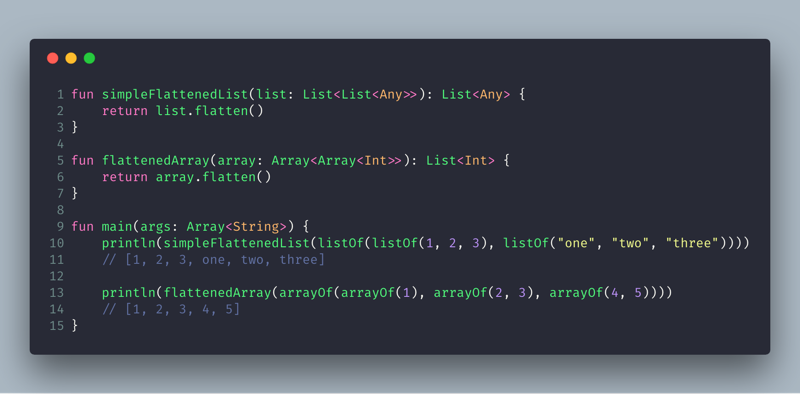
This will reduce overhead. The forEach statement will be compiled into 10 ArrayList.add statements. Turns out that yes And the reason is quite clear and straightforward but it hadn’t registered in my mind until now: Note that vararg parameters are, as a rule, never nullable, because in Java there is no good way to distinguish between passing null as the entire vararg array versus passing null as a single element of a non-null vararg array. The compiler can count the arguments fed into the function and determine content.size. The arrayListOf function could be improved like that: inline fun arrayListOf(inline vararg content: T): ArrayList Test #3 (manually adding the values to an arraylist) is almost three times faster than kotlins dedicated arrayListOf function. As always, the code samples are available over on GitHub. Additionally, we can even combine literals and arrays to functions with vararg parameters. It’s also possible to pass multiple arrays. Firstly, we can simply pass an array with a spread operator to the function call. In Java, vararg parameters must be declared as the last parameter.I made a small benchmark to check all ways to populate an arraylist. There are multiple ways of converting a Kotlin array to a vararg parameter. Basically, it copies all elements from the original array to a new one and passes the copied one to the sum() function.

Index 13 and 14 are loading two parameters into the operand stack and then passing them to the pyOf(int, int) method. Then it will pass the new array as the vararg parameter: 12: aload_0 // loads the intġ5: invokestatic #71 // Method java/util/pyOf:([II)[I


Kotlin will use the pyOf(array, length) method to first create a copy of the spreading array. Moreover, when using the spread operator: val numbers = intArrayOf(1, 2)

Also, the ACC_VARARGS flag specifies that the function accepts a variable-length parameter. After that, we can take a peek at the generated bytecode via javap: $ javap -c -p -v įlags: (0x0099) ACC_PUBLIC, ACC_STATIC, ACC_FINAL, ACC_VARARGSĪs shown above, the vararg parameter is defined as a vararg in Java.


 0 kommentar(er)
0 kommentar(er)
